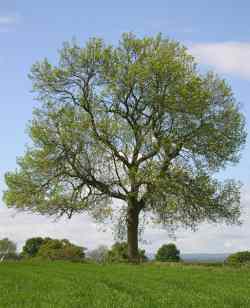 Anton Geddes writes:
Anton Geddes writes:
I’m sure most of you have heard about Ash Dieback; it’s an unfortunate thing to say that we in the Wye Valley have not escaped it’s blight. The impact of its spread is, unfortunately, getting much more pressing with most if not all trees locally showing signs of infection.
The headlines are that:
- Fungal spore creates an annual infection of the ash trees, with symptoms including leaf loss, crown dieback and bark lesions in affected trees.
- Due to how the disease works, a tree can look far healthier than it actually is, with the infection causing a tree to come into heavy leaf, appearing lush and green.
- Affected trees can become brittle and unstable making them dangerous to climb or to fell by chainsaw or manual methods.
Now for the unpleasant bit. Any land owner with trees adjacent to foot paths or roads bears a responsibility to ensure that they manage their safety obligations appropriately. Negligence is unfortunately not a defence for this.
Through the course of my work, I am currently dealing with many land owners, farmers and woodland managers and there is a worrying message coming back from them and their insurance companies. If an infected tree showing signs of dieback drops a limb or falls over causing injury, death or damage to people and property there is a good likelihood you will not be covered.
If you are concerned about any of your trees I urge you to:
- Get them inspected and consider putting a felling plan in place. (This will help with insurance cover.)
- Make sure that any contractor you approach understands the dangers of felling infected trees. (You as the land owner also carry a safety responsibility)
- Consider working with neighbours to do group safety works and reduce costs.
Finally, and it’s sad to say as it’s such a beautiful tree, but whilst there is significant conversation about preserving genetic diversity, the field trials into resistant strains indicate that in real terms it is going to kill off 99.97% of the ash trees in the UK.
What can be done?
The next steps would be to identify a firm who can identify and mark up infected trees, we are on a tight schedule this autumn but it’s still possible.
I can recommend several firms who are well versed in dealing with these issues. It would be sensible to look at the problem on a Tregagle wide scale and then try to co-ordinate removal to reduce costs. As we have got a mix of affected properties in terms of scale if people are interested I can put a proposal together that we could take to firms to price against. Would anyone have major objections to all roadside trees being marked up to make this easier to deal with once we’ve lost all the leaves?
Limited resources mean that such a proposal can only cover Tregagle at the moment, but Anton adds “I would encourage anyone who is concerned to get in touch though and we can collate a master list of affected properties for inclusion if we can get a contractor interested.”
Please contact Anton Geddes if you wish to be included in this project.
Some further reading for those who are interested: Ash: safety vs nature
About Anton Geddes
I work for a membership organisation called Confor whose aim is to support sustainable forestry and wood-using businesses. Essentially we are a seed to sawmill organisation and everything in between! For my part, I have spent about a decade working in the timber industry, latterly four years as a specialist forestry surveyor and the most recent two with Confor promoting the message of woodland creation and the multiple uses of timber.
One of my key focus areas at present is in lobbying the Welsh Government to address the significant issue of Ash Dieback. Whilst the disease has likely been present in the UK since the mid 1990s, it’s in the last 4-5 years that we’ve seen a significant upsurge in infection rates. The guidance from Welsh Government and Natural Resources Wales has been very limited to date, meaning organisations such as Confor, the Institute of Chartered Foresters along with Forestry Safety Group FISA have had to take the lead. I personally feel that land owners have been left to bear the brunt of the problem with little guidance or support, hence why for those in the community surrounding us I’m trying to help people reduce costs and mitigate risks.